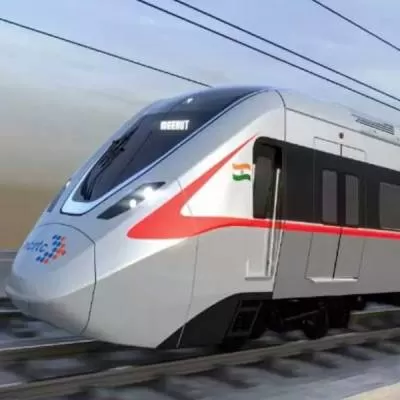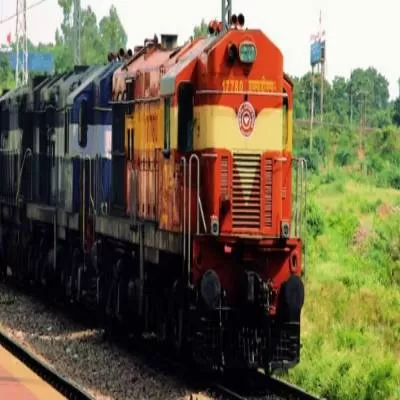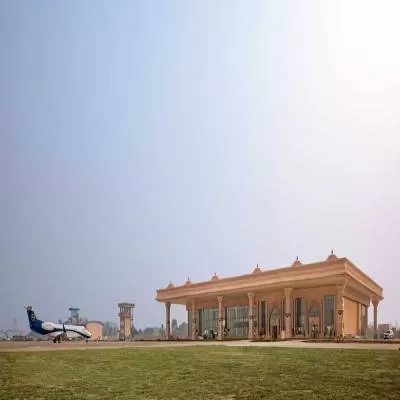- Home
- Real Estate
- Here are technologies that will play a key role in making 'Housing for All by 2022' a success.

Here are technologies that will play a key role in making 'Housing for All by 2022' a success.
Tech benefits
Technology helps reduce expenditure on manpower and materials, especially "at a time where the expenditure on inventory and demand for timely delivery of projects are increasing', says Ashish R Puravankara, Managing Director, Puravankara.
Technology is a significant enabler of construction speed, cost-optimisation and quality, says Pal. "This is especially critical in the case of affordable housing, where costs and completion timelines remain sacrosanct." He adds that the innovative use of construction technology, building materials and ready-to-fit techniques can boost productivity, while enhancing quality, improving speed and reducing waste.
Amit Haware, CEO & Joint Managing Director, Haware Properties, says, "The use of traditional construction systems and materials is rapidly being transformed and technologically-savvy materials and processes are making construction faster, cheaper and better."
According to Rajeev Jain, Director, Nirmal, technology has helped the company in the areas of finance, marketing, human resources, research, feasibility, manufacturing and operations. "We have shifted to modern smart designs and structures. And reliability on channel partners alone has reduced phenomenally."
Also, new advances in technology enable meticulous conceptualisation during the pre-construction stage, promoting efficient use of labour and materials as it lowers uncertainty in executing construction and timely delivery. "Availability of skilled labour is a big challenge, compounded by the absence of training schools for skill development and resulting in low productivity, poor quality, increased duration and, hence, higher costs," says PV Prasanth, Director-Operations, Shapoorji Pallonji Engineering and Construction. "The solution lies in adoption of technology and increased mechanisation, which helps optimise cost, reduce execution time and improve quality and performance."
What's more, in affordable housing, one needs to achieve economies of scale; with technology, volumes can be achieved within the prescribed time.
The foundation
Conventional foundations are either isolated or raft based on the soil investigation report and geotechnical studies.
Speaking of Mahindra Lifespace Developers' technology-aided initiatives towards affordable housing, Pal says, "To offer home-buyers unmatched quality, we tied up with IIT-Madras and discovered trench foundation technology."
With this, the company started erecting sheer walls; these are covered with a building envelope, done with lightweight blocks.
Depending on project to project, Jain uses different foundations.
"If the foundation of the project is deep, we use pile foundation, diaphragm walls and caissons," he explains. "Else, for shallow foundations, we use individual footing, strip footing and a raft or mat foundation."
Construction equipment and methods
An excellent replacement to conventional technology could be aluminium wall formwork, normally called Mivan technology. Puravankara has upgraded from conventional shuttering to Mivan. As the managing director says, "We have been using this for our superstructures and engineered doors for some projects."To this, Pal adds, "With this technology, one can avail benefits in terms of quality, time and resources, which are extremely critical in affordable housing."
Aluminium wall formwork is appropriate for building a large number of houses within a short time span using room size forms to build walls and slabs in one continuous pour on concrete.
This system involves cast-in-situ concrete wall and floor slabs cast monolithically, while providing the structural system in one continuous pour. "At Happinest," says Pal, "we have embraced a customised manufacturing approach via the use of aluminium formwork along with cellular lightweight blocks for construction of the core structure."
In terms of sustainable apartments and large urban projects, Puravankara points out to the use of precast technology.
"To build affordable homes," he adds, "one has to pay attention to the small requirements of the client, right from the design phase. We bring together the architect, structural engineer and precast contractor under one roof to design the houses in a modular concept."
For his part, Jain focuses on the construction equipment adopted by Nirmal. "We use earthmoving, hauling, hoisting, conveying, aggregate and concrete production, pile-driving, tunnelling and rock drilling, and pumping and dewatering equipment, among others." He cites methods adopted for construction as excavation, digging of large quantities of earth, moving them to distances that are sometimes fairly long, placement, compacting, levelling, dozing, grading and hauling.
Technologies in walling
While conventional bricks and concrete blocks are heavy, red-clay bricks, which are lighter, are not available in best quality.
So, commonly available options for walls include concrete blocks, AAC blocks and a concrete wall.
Considering this, Pal says, "We certainly do not want to make a building envelope with a concrete wall because we need better thermal efficiency." In this scenario, he mentions cellular lightweight concrete (CLC), a solution with density between 600 kg and 700 kg per cu m, which actually floats into water. This also results in faster productivity as it becomes easier for labourers to lay the blocks and offers thermal insulation properties. "CLC has been designed and developed by us, for us, and we have filed a patent for the same. It is produced in our own in-house plant."
As for technologies Nirmal uses in walling, Jain shares his list: "Precast flat panel system, 3D volumetric construction, tunnel form, hybrid concrete construction, thin joint masonry, insulating concrete formwork and precast foundations."
And Rahul Sabharwal, COO, VBHC, points out to the increasing use of reflective paints on walls to bring down the UV values of houses and lessen heat generation.
Roofing systems
Ideally, the type of roofing system depends on the type of roof: Low slope and deep slope.
"Thatch roofs, slate or stone roofs, clay tile roofs and asphalt shingle roofing," lists Jain, sharing the roofing systems used in Nirmal's projects.
For his part, while Sabharwal sees new technologies coming into the market, he says, "Our roofing solutions still remain having a concrete slab on top with a slope." He predominantly sees the advent of new technologies to build up the structure as one of the key criteria to turnaround the building as fast as possible.
Tiles and patterns in flooring
While the type of flooring depends on the project, tiling is making good progress.
"Instead of using mortar for tiling, we have started using tile adhesives; this helps save money, manpower and time," says Sabharwal. And Jain says Nirmal generally uses "marble, marbonite, ceramic, travertine, porcelain, wooden, slate, onyx, quartzite, phoenix and granite flooring".
Meanwhile, Pal tells us that the use of specially designed formwork panels enables the construction of one typical floor every eight to 10 days (versus traditional construction, which takes around 20 days). This technology also facilitates uniformity and consistent quality of construction (minimises leakage), improves durability and reduces maintenance costs.
Doors and windows
Mahindra Lifespace Developers has used the concept of modularity - ready-to-fix components - in its affordable housing projects.
Pal elaborates, "Moving away from the conventional marble and granite used in kitchens, we have made a frame with mild steel structures; it is like box sections. This frame is then brought to the kitchen, we fill it with marble and the kitchen platform is ready. This activity does not take more than three to four hours."
Stating his company's preferences, Jain reveals, "We use timber, frame, panelled, flush, PVC and fibre doors. At some places, we also use glass doors. And we use double-hung, casement, awning, picture, transom, slider, stationery and garden windows."
Impact of technology on cost
The use of new-age technologies definitely reduces construction costs.
"Wastage will decrease and efficiency shall be higher," reasons Pal. In addition, he adds that any delay in project completion leads to cost escalation. If construction costs are lower, the final selling cost of the housing unit can also be reduced without affecting the developer's margins.
In Puravankara's view, adopting precast has offered several benefits and flexibility to developers.
"It ensures the optimal use of steel and concrete, helping to minimise wastage of material and providing durable solutions to end-users,"
he says. He adds that plastering is completely avoided for walls, slabs, beams and staircases as the surface is already good enough to receive putty and paint. This, in turn, helps avoid costs incurred in traditional methods, bringing down overall production costs.
Cost-effectiveness clearly starts coming in as the business scales up, says Sabharwal. He gives the example of a typical floor slab, where one does floor jumps in six to seven days, whereas conventional technology would take anything between 14 and 21. Cutting down this cycle time results in direct cost savings.
Technologies can help in various forms. Arun Anand, Joint CMO, Shriram Properties, says, "Some save cost, some save time, some improve efficiency, some have advantages in terms of quality and they all have some disadvantages in terms of quality, cost or logistics. It is a question of what your project wants and how or where you want to save cost. It all depends on the project, location and objectives."
Cost-effectiveness and speedy construction
To make technologies cost-effective, they require large repetitive volumes. And as the need for affordable housing is large, one can offer large repetitive volumes so that such technologies become economically viable and can be increasingly utilised, says Pal. Faster project execution will also lead to lower financing costs, thereby bringing down the costs of individual housing units.
Puravankara has always been passionate about technology and bringing in innovative construction techniques. "Mivan and precast technologies give us better control over costs and safety, owing to their uniformity and lower dependence on weather," he says. On an average, depending on project scale, precast and Mivan can help cut construction costs by up to 15 per cent. Thus, overall construction turns out to be cost-effective, as the units are assembled at the factory, transported to the site and installed in a short span of time.
What's emerging?
The structure base of the building is where technologies are really playing out, such as in the case of precast. "Precast technology has huge potential but unfortunately is yet to be fully tapped in India," reckons Pal. He adds that for Happinest, the company is not limiting itself to anything in hybrid technology and consistently trying to find more cost-effective, design-friendly, soil condition-friendly and time-effective technologies, starting from the foundation level.
In terms of technologies of the future, 3D printing could be the one to watch. "The success of this technology has been proved globally, wherein a house was built in 48 hours," says Sabharwal. "And we see this making an entry into India as well. We are closely watching this space to take a leadership role."
In the near future, Puravankara also intends to focus on clean and green technologies like zero-energy homes and 3D modelling. "This will involve using less toxic or non-toxic materials and promote generating energy by sustainable means such as solar panels and wind turbines," Puravankara points out. "3D modelling will help analyse how a structure should perform when built, occupied and deconstructed."
As Prasanth sees it, technology plays an essential role in any construction project today, which is why "we are constantly exploring new innovations and are in an advanced stage of adopting 3D precast technology in some of our projects. This is the method used across many of the advanced countries today." In his view, the role of technology will far exceed expectations and imagination.
We couldn't agree more!
The Affordable Housing Scenario
According to the Ministry of Housing and Urban Affairs (MoHUA), a total of 297,183 housing units are occupied by beneficiaries as in March 2018, states a recent report on Affordable Housing jointly published by JLL India and PHD Chamber of Commerce and Industry. The report further states that the housing shortage, earlier projected at 18.78 million in 2011, has been revised downwards to about 10 million units as of 2017 through subsequent assessment carried out by MoHUA. This comes with the assurance of housing for all by 2022, in alignment with the PMAY-U programme objectives. Indeed, the Central Government's aggressive push on affordable housing is evident from the threefold increase in the stock of houses completed under PMAY-U since April 2017.
The Precast Effect
Keeping in mind rising demand for affordable housing, precast technology addresses the need for quality and timely delivery.
This technology, much spoken about but not applied on a large scale, has its own, distinct advantages.
Precast technology helps us reduce labour, which is in short supply today, enables improved quality and performance and reduces timeline, says PV Prasanth, Director-Operations, Shapoorji Pallonji Engineering and Construction.
It has helped with mass production of certain aspects of projects in a controlled environment, thereby reducing the risks associated with the site and weather conditions. Cost-saving opportunities are generated, which is the key to the affordable housing segment; teamed with environment-conscious practices, the projects are well-designed, valuable assets.
Precast technology eliminates certain limitations usually faced in traditional methods of construction. 'With the concrete being mould-casted to produce construction products, these casts are produced in a factory or project site under specific conditions where the emphasis is always on quality,' points out Ashish R Puravankara, Managing Director, Puravankara. 'This makes the practice extremely reliable, which ultimately reduces timelines.'
For Arun Anand, Joint CMO, Shriram Properties, precast is something that can be evaluated if the design is highly standardised and the project offers large scale of construction; for instance, 5,000 apartments. ôIt helps you save time drastically but the cost of construction may be marginally higher. However, in big projects, we save more if we reduce time of execution. This is where precast may win.ö However, he adds that precast technology will help affordable housing only if the following conditions are met:
The project has to offer scale; say, 5,000-10,000 apartments where the design is completely standardised. So, the scale absorbs the cost and time factors.
You need the marketing capability to sell large volumes in a short span of time so the project does not remain unoccupied for long owing to inability to sell û in which case, one loses money and cash flow.
- SHRIYAL SETHUMADHAVAN (With inputs from Seraphina D'souza)
Developers of affordable homes in India are faced with multiple challenges: The need to ensure low ticket size, plus the requirement for swift execution and consistent quality of construction. "The solution lies in innovation and technology so that challenges are mitigated and a quality product is offered to home buyers," says Amit Pal, Vice President-Projects, Mahindra Lifespace Developers. Tech benefits Technology helps reduce expenditure on manpower and materials, especially "at a time where the expenditure on inventory and demand for timely delivery of projects are increasing', says Ashish R Puravankara, Managing Director, Puravankara. Technology is a significant enabler of construction speed, cost-optimisation and quality, says Pal. "This is especially critical in the case of affordable housing, where costs and completion timelines remain sacrosanct." He adds that the innovative use of construction technology, building materials and ready-to-fit techniques can boost productivity, while enhancing quality, improving speed and reducing waste. Amit Haware, CEO & Joint Managing Director, Haware Properties, says, "The use of traditional construction systems and materials is rapidly being transformed and technologically-savvy materials and processes are making construction faster, cheaper and better." According to Rajeev Jain, Director, Nirmal, technology has helped the company in the areas of finance, marketing, human resources, research, feasibility, manufacturing and operations. "We have shifted to modern smart designs and structures. And reliability on channel partners alone has reduced phenomenally." Also, new advances in technology enable meticulous conceptualisation during the pre-construction stage, promoting efficient use of labour and materials as it lowers uncertainty in executing construction and timely delivery. "Availability of skilled labour is a big challenge, compounded by the absence of training schools for skill development and resulting in low productivity, poor quality, increased duration and, hence, higher costs," says PV Prasanth, Director-Operations, Shapoorji Pallonji Engineering and Construction. "The solution lies in adoption of technology and increased mechanisation, which helps optimise cost, reduce execution time and improve quality and performance." What's more, in affordable housing, one needs to achieve economies of scale; with technology, volumes can be achieved within the prescribed time. The foundation Conventional foundations are either isolated or raft based on the soil investigation report and geotechnical studies. Speaking of Mahindra Lifespace Developers' technology-aided initiatives towards affordable housing, Pal says, "To offer home-buyers unmatched quality, we tied up with IIT-Madras and discovered trench foundation technology." With this, the company started erecting sheer walls; these are covered with a building envelope, done with lightweight blocks. Depending on project to project, Jain uses different foundations. "If the foundation of the project is deep, we use pile foundation, diaphragm walls and caissons," he explains. "Else, for shallow foundations, we use individual footing, strip footing and a raft or mat foundation." Construction equipment and methods An excellent replacement to conventional technology could be aluminium wall formwork, normally called Mivan technology. Puravankara has upgraded from conventional shuttering to Mivan. As the managing director says, "We have been using this for our superstructures and engineered doors for some projects."To this, Pal adds, "With this technology, one can avail benefits in terms of quality, time and resources, which are extremely critical in affordable housing." Aluminium wall formwork is appropriate for building a large number of houses within a short time span using room size forms to build walls and slabs in one continuous pour on concrete. This system involves cast-in-situ concrete wall and floor slabs cast monolithically, while providing the structural system in one continuous pour. "At Happinest," says Pal, "we have embraced a customised manufacturing approach via the use of aluminium formwork along with cellular lightweight blocks for construction of the core structure." In terms of sustainable apartments and large urban projects, Puravankara points out to the use of precast technology. "To build affordable homes," he adds, "one has to pay attention to the small requirements of the client, right from the design phase. We bring together the architect, structural engineer and precast contractor under one roof to design the houses in a modular concept." For his part, Jain focuses on the construction equipment adopted by Nirmal. "We use earthmoving, hauling, hoisting, conveying, aggregate and concrete production, pile-driving, tunnelling and rock drilling, and pumping and dewatering equipment, among others." He cites methods adopted for construction as excavation, digging of large quantities of earth, moving them to distances that are sometimes fairly long, placement, compacting, levelling, dozing, grading and hauling. Technologies in walling While conventional bricks and concrete blocks are heavy, red-clay bricks, which are lighter, are not available in best quality. So, commonly available options for walls include concrete blocks, AAC blocks and a concrete wall. Considering this, Pal says, "We certainly do not want to make a building envelope with a concrete wall because we need better thermal efficiency." In this scenario, he mentions cellular lightweight concrete (CLC), a solution with density between 600 kg and 700 kg per cu m, which actually floats into water. This also results in faster productivity as it becomes easier for labourers to lay the blocks and offers thermal insulation properties. "CLC has been designed and developed by us, for us, and we have filed a patent for the same. It is produced in our own in-house plant." As for technologies Nirmal uses in walling, Jain shares his list: "Precast flat panel system, 3D volumetric construction, tunnel form, hybrid concrete construction, thin joint masonry, insulating concrete formwork and precast foundations." And Rahul Sabharwal, COO, VBHC, points out to the increasing use of reflective paints on walls to bring down the UV values of houses and lessen heat generation. Roofing systems Ideally, the type of roofing system depends on the type of roof: Low slope and deep slope. "Thatch roofs, slate or stone roofs, clay tile roofs and asphalt shingle roofing," lists Jain, sharing the roofing systems used in Nirmal's projects. For his part, while Sabharwal sees new technologies coming into the market, he says, "Our roofing solutions still remain having a concrete slab on top with a slope." He predominantly sees the advent of new technologies to build up the structure as one of the key criteria to turnaround the building as fast as possible. Tiles and patterns in flooring While the type of flooring depends on the project, tiling is making good progress. "Instead of using mortar for tiling, we have started using tile adhesives; this helps save money, manpower and time," says Sabharwal. And Jain says Nirmal generally uses "marble, marbonite, ceramic, travertine, porcelain, wooden, slate, onyx, quartzite, phoenix and granite flooring". Meanwhile, Pal tells us that the use of specially designed formwork panels enables the construction of one typical floor every eight to 10 days (versus traditional construction, which takes around 20 days). This technology also facilitates uniformity and consistent quality of construction (minimises leakage), improves durability and reduces maintenance costs. Doors and windows Mahindra Lifespace Developers has used the concept of modularity - ready-to-fix components - in its affordable housing projects. Pal elaborates, "Moving away from the conventional marble and granite used in kitchens, we have made a frame with mild steel structures; it is like box sections. This frame is then brought to the kitchen, we fill it with marble and the kitchen platform is ready. This activity does not take more than three to four hours." Stating his company's preferences, Jain reveals, "We use timber, frame, panelled, flush, PVC and fibre doors. At some places, we also use glass doors. And we use double-hung, casement, awning, picture, transom, slider, stationery and garden windows." Impact of technology on cost The use of new-age technologies definitely reduces construction costs. "Wastage will decrease and efficiency shall be higher," reasons Pal. In addition, he adds that any delay in project completion leads to cost escalation. If construction costs are lower, the final selling cost of the housing unit can also be reduced without affecting the developer's margins. In Puravankara's view, adopting precast has offered several benefits and flexibility to developers. "It ensures the optimal use of steel and concrete, helping to minimise wastage of material and providing durable solutions to end-users," he says. He adds that plastering is completely avoided for walls, slabs, beams and staircases as the surface is already good enough to receive putty and paint. This, in turn, helps avoid costs incurred in traditional methods, bringing down overall production costs. Cost-effectiveness clearly starts coming in as the business scales up, says Sabharwal. He gives the example of a typical floor slab, where one does floor jumps in six to seven days, whereas conventional technology would take anything between 14 and 21. Cutting down this cycle time results in direct cost savings. Technologies can help in various forms. Arun Anand, Joint CMO, Shriram Properties, says, "Some save cost, some save time, some improve efficiency, some have advantages in terms of quality and they all have some disadvantages in terms of quality, cost or logistics. It is a question of what your project wants and how or where you want to save cost. It all depends on the project, location and objectives." Cost-effectiveness and speedy construction To make technologies cost-effective, they require large repetitive volumes. And as the need for affordable housing is large, one can offer large repetitive volumes so that such technologies become economically viable and can be increasingly utilised, says Pal. Faster project execution will also lead to lower financing costs, thereby bringing down the costs of individual housing units. Puravankara has always been passionate about technology and bringing in innovative construction techniques. "Mivan and precast technologies give us better control over costs and safety, owing to their uniformity and lower dependence on weather," he says. On an average, depending on project scale, precast and Mivan can help cut construction costs by up to 15 per cent. Thus, overall construction turns out to be cost-effective, as the units are assembled at the factory, transported to the site and installed in a short span of time. What's emerging? The structure base of the building is where technologies are really playing out, such as in the case of precast. "Precast technology has huge potential but unfortunately is yet to be fully tapped in India," reckons Pal. He adds that for Happinest, the company is not limiting itself to anything in hybrid technology and consistently trying to find more cost-effective, design-friendly, soil condition-friendly and time-effective technologies, starting from the foundation level. In terms of technologies of the future, 3D printing could be the one to watch. "The success of this technology has been proved globally, wherein a house was built in 48 hours," says Sabharwal. "And we see this making an entry into India as well. We are closely watching this space to take a leadership role." In the near future, Puravankara also intends to focus on clean and green technologies like zero-energy homes and 3D modelling. "This will involve using less toxic or non-toxic materials and promote generating energy by sustainable means such as solar panels and wind turbines," Puravankara points out. "3D modelling will help analyse how a structure should perform when built, occupied and deconstructed." As Prasanth sees it, technology plays an essential role in any construction project today, which is why "we are constantly exploring new innovations and are in an advanced stage of adopting 3D precast technology in some of our projects. This is the method used across many of the advanced countries today." In his view, the role of technology will far exceed expectations and imagination. We couldn't agree more! The Affordable Housing Scenario According to the Ministry of Housing and Urban Affairs (MoHUA), a total of 297,183 housing units are occupied by beneficiaries as in March 2018, states a recent report on Affordable Housing jointly published by JLL India and PHD Chamber of Commerce and Industry. The report further states that the housing shortage, earlier projected at 18.78 million in 2011, has been revised downwards to about 10 million units as of 2017 through subsequent assessment carried out by MoHUA. This comes with the assurance of housing for all by 2022, in alignment with the PMAY-U programme objectives. Indeed, the Central Government's aggressive push on affordable housing is evident from the threefold increase in the stock of houses completed under PMAY-U since April 2017. The Precast Effect Keeping in mind rising demand for affordable housing, precast technology addresses the need for quality and timely delivery. This technology, much spoken about but not applied on a large scale, has its own, distinct advantages. Precast technology helps us reduce labour, which is in short supply today, enables improved quality and performance and reduces timeline, says PV Prasanth, Director-Operations, Shapoorji Pallonji Engineering and Construction. It has helped with mass production of certain aspects of projects in a controlled environment, thereby reducing the risks associated with the site and weather conditions. Cost-saving opportunities are generated, which is the key to the affordable housing segment; teamed with environment-conscious practices, the projects are well-designed, valuable assets. Precast technology eliminates certain limitations usually faced in traditional methods of construction. 'With the concrete being mould-casted to produce construction products, these casts are produced in a factory or project site under specific conditions where the emphasis is always on quality,' points out Ashish R Puravankara, Managing Director, Puravankara. 'This makes the practice extremely reliable, which ultimately reduces timelines.' For Arun Anand, Joint CMO, Shriram Properties, precast is something that can be evaluated if the design is highly standardised and the project offers large scale of construction; for instance, 5,000 apartments. ôIt helps you save time drastically but the cost of construction may be marginally higher. However, in big projects, we save more if we reduce time of execution. This is where precast may win.ö However, he adds that precast technology will help affordable housing only if the following conditions are met: The project has to offer scale; say, 5,000-10,000 apartments where the design is completely standardised. So, the scale absorbs the cost and time factors. You need the marketing capability to sell large volumes in a short span of time so the project does not remain unoccupied for long owing to inability to sell û in which case, one loses money and cash flow. - SHRIYAL SETHUMADHAVAN (With inputs from Seraphina D'souza)
























